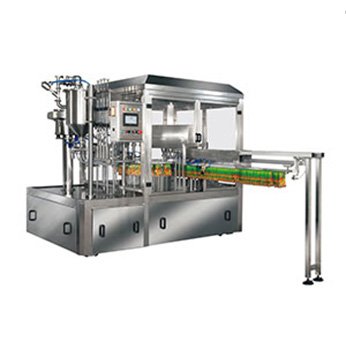– For bread Manufacture
As bread is one of the most common food items in our daily lives, the commercial bread-making process is similar to home-made bread, but only in terms of scale and automation. If you want to commercialize the bread-making process, you may take a look at the following bread-making process, hopefully, it can assist you in making the bread making process perfect.
1. Raw Materials for Bread Making
1.1 The flour used for breads with different textures varies. If you are looking for a gluten-free texture, you can use medium-gluten flour or high-gluten flour. General ingredients include flour, yeast, sucre, salt, milk or water, butter, and other flavors of raw materials.
The large number of ingredients also requires attention to storage conditions, with each ingredient being stored in the right conditions to ensure freshness and quality. Par exemple, flour, yeast, salt, sucre, and milk are generally stored at room temperature, away from direct sunlight. Butter, d'autre part, needs to be stored at low temperatures to be stable.
1.2 Weighing and mixing
Large-scale production lines use automated equipment to accurately measure the weight of each ingredient, which saves the output of raw materials and avoids leakage. Put the weighed ingredients into the mix in equal proportions, here it is necessary to pay attention to the order of the ingredients of the bread. Mix the yeast and warm milk first, then mix the flour, sucre, salt, and milk in proportional pairs, and then mix the yeast-milk mixture together to form a dough.

1.3 Fermentation and Kneading
First fermentation: the mixed dough needs to be stirred by an industrial-grade kneading machine to achieve the effect of the film, because the mass mixing will cause the dough temperature to rise, and overheating will cause the yeast to be ineffective, so ice cubes will be added to cool down the temperature here, et en même temps, you can always keep an eye on the degree of fermentation of the dough, and make adjustments in a timely manner. Then put in the softened butter and mix again, and stop mixing until a film is formed.

1.4 Dividing and organizing the dough
The mixed dough can be weighed to ensure that the size of the bread is consistent. After the dough is ready, the worker puts the dough into the automatic cutting and weighing equipment to divide the large dough into small pieces. The cut pieces are then rolled out to make the dough smooth and form a protective film.
Second fermentation: the dough is put into the fermentation room for intermediate fermentation so that the dough expands again at the right temperature.
1.5 Shaping
Shape the dough according to the type of bread you want to make, using a shaping machine or by hand. Common types of bread are toast, meatloaf, baguettes, rolls, sandwiches, et ainsi de suite. Add the toppings you want to make in this step, such as sandwiches, noix, sesame seeds, etc..
1.6 Final fermentation
Put the shaped dough into the third fermentation, this step can be called the ultimate fermentation. In this step, you need to control the temperature and humidity of the fermentation room to make sure that the fermentation results are consistent for each bread.
1.7 Predicting the Oven and the Bakery Bread-Making Process
While the dough is undergoing final fermentation, the oven can be preheated. A preheated oven will make the fermented dough good for baking. Usually, the baking temperature of bread is 180-220°C, depending on the degree of bread coloring to adjust, in the industrial oven is generally recommended to have a thermometer to measure, so as to avoid the temperature difference caused by different brands of industrial ovens, which can also be convenient for workers to observe. Industrial ovens have a combination of data-based temperature regulation systems, usually equipped with multi-layer baking racks, and can bake a lot of bread at the same time, very suitable for industrialized bread production.
1.8 Bread cooling
Baked bread needs to be cooled, commercialized production lines are equipped with cooling lines to naturally cool to room temperature, where cooling lines are available with fans to speed up the cooling rate.
1.9 Bread Packaging
You can add other equipment to the production line according to the demand of the finished bread, such as slicing, toast bread is usually produced in a square shape, which needs to be sliced and then packaged, you can add an automatic cutting machine after the cooling line, which can cut the bread into uniform slices according to the fixed length.
Sealed packaging can extend the shelf life of the bread. A bread packing machine is usually paired with a pillow packaging machine, this machine can make bags, feed and seal, efficiently complete the packaging process, and industrialized packaging bread. Packaging materials include food-grade plastic bags and aluminum foil bags. Depending on the type of bread, it is possible to add preservatives or oxygen absorbers.
2. Quality Testing
Bread belongs to the food products for direct consumption in commercial production, so it is necessary to incorporate quality testing. Packaged bread is tested for appearance, weight, texture, and other aspects to ensure compliance with food standards. Weight check can check out whether the bread has foreign matter, in the error of the positive and negative values, the deviation is too much bread needs to be recorded, the production data, production time, and the operator’s information, to facilitate the later traceability and improvement.
3. Storage and Distribution
Mass production of bread is faced with storage problems and distribution. It is recommended to keep the packed bread in a constant temperature warehouse to ensure the right temperature for storage. D'autre part, fast delivery according to the orders you receive to ensure that it reaches the point of distribution can have enough time to sell. Some of the points of distribution used are supermarkets, convenience stores, bakeries, etc.. These can be combined with mechanized transportation and deployment to speed up the delivery time and distribution time, and through the computer control system, you can monitor and adjust the production parameters in real-time to ensure the consistency of product quality.
Summarize
The industrial production of bread not only incorporates automated processes to save labor and costs to a certain extent but also allows for batch production of hot bread to accommodate sales trends. The complete process of making bread step by step, from raw material selection, weighing, mixing, fermentation, shaping, baking, and packaging, should be practiced in strict accordance with food safety standards to lay the foundation of the brand.
If you still have any questions or want to understand the point of view, please feel free to contact us to discuss together.
Learn More Other Packaging Plan
How to Pack the Ready To Eat Food?






